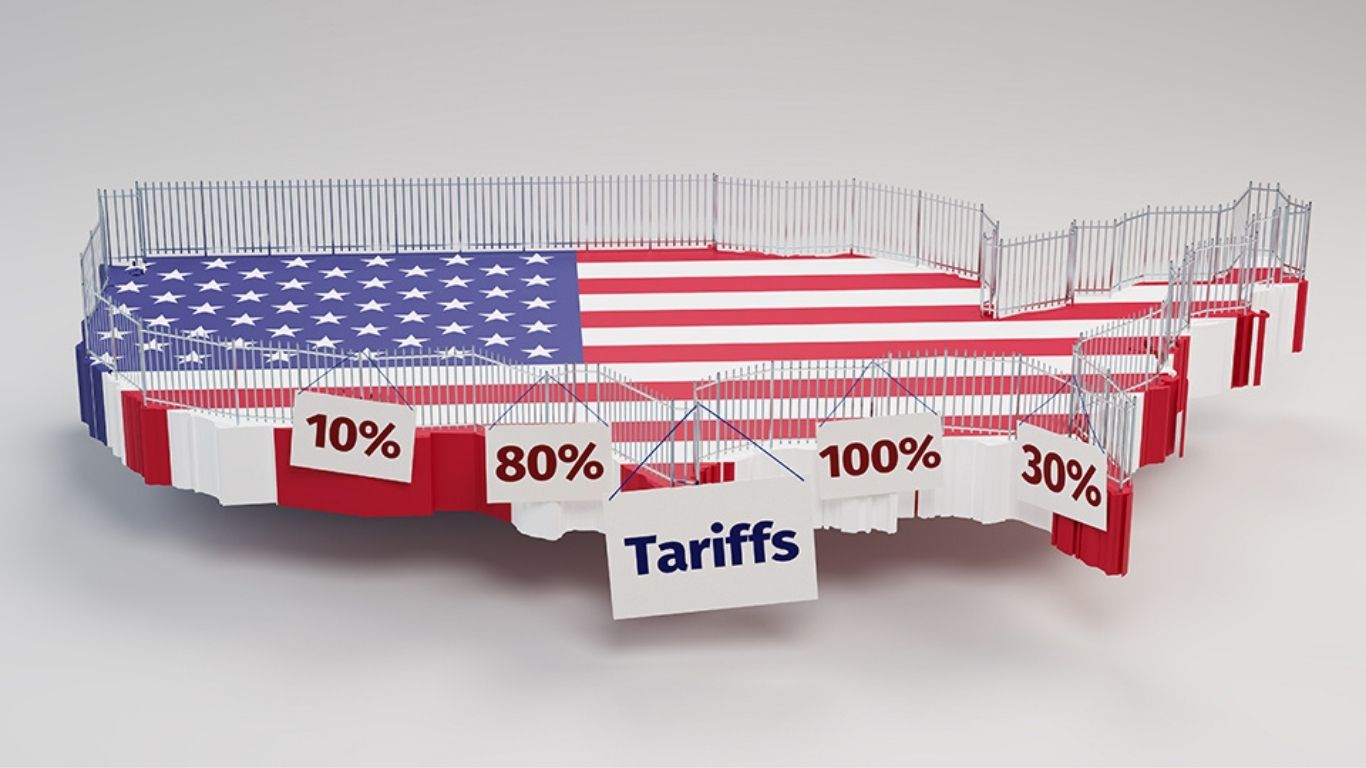Hundreds of factories in the garment sector have closed in the last six months. There are more factories are at the risk of shutting down Nevertheless, the hope is that the export income is increasing overall.
However, analysts explain the reason for export increase, saying the crisis may arise if the government does not take necessary measures.
At least 68 factories closed in Gazipur, Savar and Ashulia
Gazipur Industrial Police-2 Superintendent of Police (SP) AKM Zahirul Islam said, “At least 51 industrial factories have been declared closed in the district for various reasons. Ten of them have been closed temporarily.” 68 factories have been closed in Dhaka, Savar, Ashulia, Dhamrai and Gazipur. Of these, 58 are permanent and 10 are closed on a temporary basis. In addition, the Keya Group has announced the closure of six factories from next May. Most of the closed factories are in the garments and clothing sectors.
Concerned authority says,”Due to the firmness towards loans, many factories have gone flinched and this is why some factories have been closed. Again,as the owners of many factories close to the ousted Awami League government,ex-ruling party of the country fell down through an uprising, are in hiding, several factories have turned fragile. Besides, some factories are unable to cope with the increase in production costs. Many of the workers of these factories are protesting to open the factories and demand the payment of arrears. Roads and highways are often closed due to their movement.Members of the law enforcement agencies are struggling to handle the agitating workers.
Banks and buyers ‘non -cooperation’
Bangladesh Knitwear Manufacturers and Exporters Association (BKMEA) president Mohammad Hatem told, “Closing just starts. More factories will be closed.After that the banks are doing with us, it is difficult to run the factories. Besides, the buyers are treating us immoral. They are canceling the order after being brought to the raw materials in the factory. Again, it’s too late to pay after taking delivery. There are many more small and medium sized factories that they cannot recover at all. Moreover, the government has taken initiative to increase the price of gas. If that is the case, then there will be no way to close the factories. “
Export revenue increased, while some factories remained closed
Export Development Bureau (EPB) data says that more than 80 percent of Bangladesh’s export earnings come from the garment sector. According to EPB data, exports have increased by about 13 percent compared to the same period of the previous fiscal year until the last six months of the current fiscal year. And the export rate in December is even higher as a single month. In that month, it increased by 18 percent. The annual growth of the garment sector in November last month was more than 16 percent. Out of these, oven clothing exports increased by 20 percent. According to the EPB, the export of garments made in November has risen to $330 crore 61 lakh, which was $284 crore 40 lakh at the same time last year. In October, the garment sector has earned $ 9.5 billion, which is 22.5 percent higher than the same period of the previous year.
When asked about the possible reasons for export income even after the closure of the factory, former BGMEA director Mohiuddin Rubel said, “After some factories are closed, export revenue has increased. As our employees have increased, many new factories have been opened.New wings are being opened in large factories. Again, the productivity of most factories has increased as workers are skilled than ever. We are now exporting some expensive products. Big factories have increased production. As a result, the total export income has not decreased, but in some cases it has increased. Again, exports were reduced last year compared to the previous year. As a result, we want to get closer to the previous year. ”
Concerned that the export income of the garment did not increase the profit or income of the garment business traders even though the export income increased. Many owners have recently been forced to send the order of the Bayers to their own expense.
The Beximco Industrial Park company closing,
Keya group and S. Alam on same track
The workers of the leading company Beximco Group‘s have already been paid the payment from March 9. The government had to spend Tk 525 crore 46 lakh to pay this payment. The information was sent from the Ministry of Labor and Employment on Monday (March 7th). Of the 14 factories closed in Beximco, seven of the garment factories have completed the final payment of a total of 16,142 workers. The company has paid all the nine garment factories so far. The remaining factory workers will continue to pay all the outstanding payments.
The Beximco Group authorities announced the closure of the Beximco Industrial Park on December 5 for lack of exports of garments and unable to open bonds for import of raw materials. The Beximco Group, owned by former Prime Minister Sheikh Hasina’s adviser Salman F Rahman, has a loan of around Tk 1,000 crore. However,Beximco workers are protesting to demand the opening of the factory.
On the other side,Bangladesh Anti -Corruption Commission sent Abdul Khalek, the owner of the Keya Group, and filed two cases against some bankers for embezzling about Tk 530 crore. Not just the workers of the Keya Group, thousands of garment workers lost their jobs in 2021. Because, at that time, at least 5 garments, as well as some other factories, have either been completely closed, or have stopped the activities.
Since the change of government, one after another, the factory has closed. Due to gas supply problems, lack of assistance from the bank and labor dissatisfaction, one after the other factories closed. If the number of closed factories in knitwear, textiles and other sectors is calculated, the number of job workers will be much higher.
Saiful Alam, the owner of the S. Alam Group, accused of Sheikh Hasina as another associate, informed the exclusion of nine factory workers in December.
Another associate of Sheikh Hasina was Saiful Alam, the head of the S Alam Group. In December, the group reported that nine factory workers were excluded.Slow economic growth,closing factories and cutting off workers have had a negative impact on Bangladesh’s economy. GDP growth in the July-September quarter was 5.7 percent, which was 5 percent at the same period of the previous year.
The US additional tarrif to the rivalries: Auspicious to Bangladesh.
Overall exports have increased.The export of goods from Bangladesh is in a positive section.
The Export Development Bureau (EPB) released the updated statistics on the export of goods on first Monday instant. It turns out that a total of $ 28.97 billion goods have been exported in July-January in the first seven months of the current fiscal year. This export is 11.68 percent higher than the same period of the previous fiscal year 2023-24. The analysis of the EPB data shows that the export of various products made in January, agricultural processed products, leatherless shoes, frozen food and engineering products has increased, but the export of various products including leather products, jute and jute products, home textiles, plastic products has decreased. However, due to the growth of the export of clothing, the overall growth is close to the growth. This is because more than 5 percent of export earnings come from the garment sector.
The United States is the largest market for Bangladeshi products, especially garments. Donald Trump has signed three separate executive orders to import goods from Canada, Mexico and China two weeks after taking over as president of the country, which have been effective from February .
Exporters and economists are seeing the possibility of increasing Bangladesh’s exports as the United States imposes new tariffs on Chinese goods. They say that the opportunity to get additional purchases or order of various products including readymade garments, leather products, processed agricultural products, home textiles will be created. Investors may now be eager to remove the factory from China and take it to another country. Bangladesh can also invest that area.
When asked, BKMEA president Mohammad Hatem said in the first light that the export of garments made in the next few months will increase in the next few months. Because, factories currently have good purchases. Although the price of clothing is low. Responding to another question, he said that the US president imposed additional tariffs on Chinese goods and the purchase of garments made from the country would move. In that case, Bangladeshi factories will increase the opportunity to get the purchase of cheap and medium -priced products. However, the government will have to take initiative to solve the gas-power crisis as well as solve the banking problem. It is also important to continue the Export Development Fund (EDF) and Pre -Shipment Credit Scheme.




